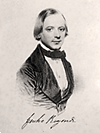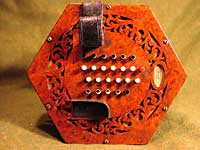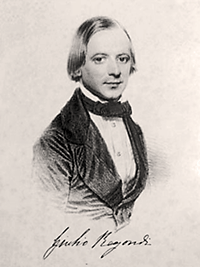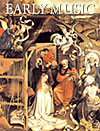Posted 27 November 2007
Wheatstone, His Sighing Reed,
and The Great Regondi
Presented by Bernard Richardson
BBC Radio4
Broadcast 27 November 2007
Charles Wheatstone was a classic inventor in the dynamic industrial atmosphere of
nineteenth century Britain. An eminent scientist in the fields of electric telegraphy,
electric clocks, typewriters and power generation, he also carried out a lifetime's
research into acoustics and music. He invented the English Concertina , probably the
only musical instrument to be invented in this country in the nineteenth century.
Wheatstone’s creation was eagerly adopted by
Italian composer and musician Giulio Regondi, who became a master of the instrument and wrote
many of his compositions for it. The genius of the performer allied with the
genius of the small hand held instrument caught the public imagination and became a craze
in the last half of the nineteenth century.
—adapted from a BBC Summary
-
 Wheatstone, His Sighing Reed, and The Great Regondi
Wheatstone, His Sighing Reed, and The Great Regondi
-
Presented by Bernard Richardson
-
BBC programme on the history and music of the English concertina,
focusing on its inventor Sir Charles Wheatstone and the first concertina virtuoso Giulio Regondi.
In addition to the presenter, Bernard Richardson, the program features (in order of appearance)
Allan Atlas, Neil Wayne, Brian Bowers, Alistair Anderson, Douglas Rogers, Jenny Cox, and Dave Townsend.
BBC Radio4 programme broadcast 27 November 2007.
Audio file in WMA format (13,320 KB) and MP3 format (26,338 KB). Time 28 mins 05 secs.
-
Posted 27 November 2007
-
» listen to audio in WMA format
-
» listen to audio in MP3 format
To listen to the programme, click on the link above;
your computer should open your Windows Media player and play the audio.
Or, to save the WMA file to the hard disk of your computer for later listening,
right-click on the link and choose "Save Target As…". The MP3 file is
about twice the size of the WMA file, with the same content.

The concertina pictured is a very early 48-key English concertina in Amboyna wood by C. Wheatstone,
London, serial no. 649. According to the Wheatstone Ledgers now at the
Horniman Museum (as discussed in the programme)
it was originally sold on 18th April 1843 to Giulio Regondi. This instrument is now in the collection of Stephen Chambers.





